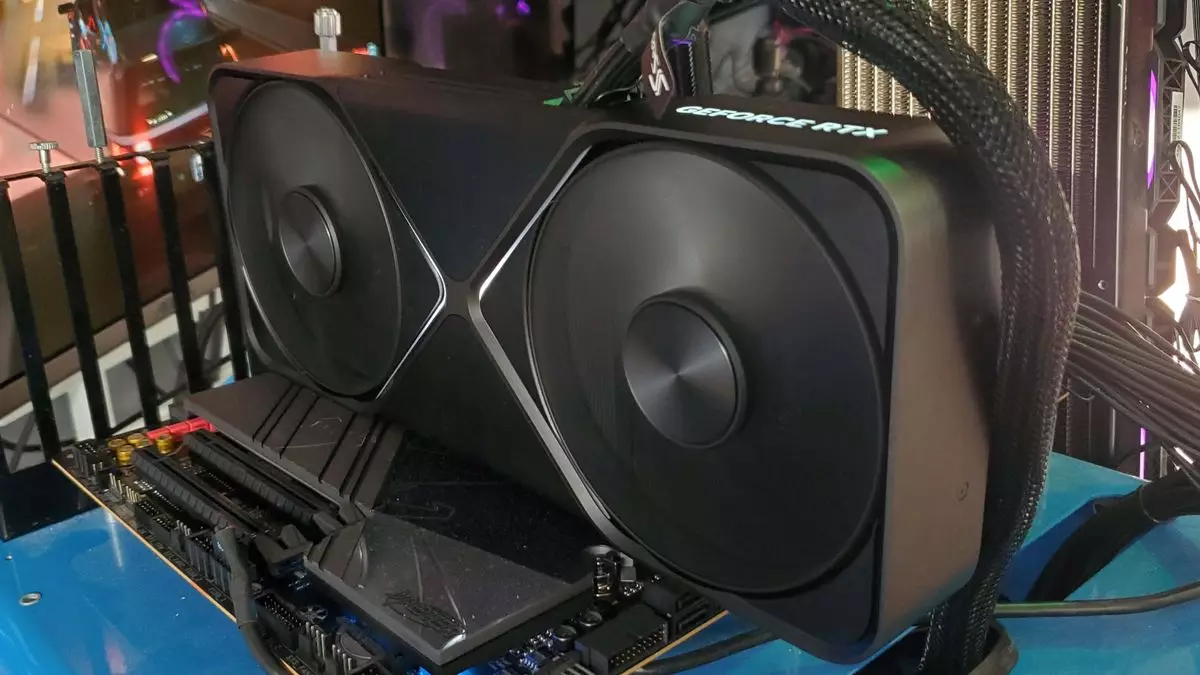The launch of Nvidia’s RTX 50-series GPUs has been marred by a series of complications that have left consumers and enthusiasts alike in a state of uncertainty. From concerns about inventory shortages and inflated pricing to troubling reports about hardware performance discrepancies, the narrative surrounding these graphics cards is complex and multifaceted. As we delve into the heart of the situation, we aim to shed light on the reality of the issues at play and what implications they hold for the future of Nvidia and its user community.
At the center of the controversy is the revelation that some of the RTX 50-series GPUs may come equipped with fewer Raster Operations Pipelines (ROPs) than originally specified. ROPs are crucial components in GPUs responsible for the final stages of rendering images. Any deficiency in these components can severely impact the graphical performance of the cards. Reports surfaced when users, including TechPowerUp, discovered their graphics cards were equipped with eight fewer ROPs than advertised, leading to subpar performance levels.
However, amidst this backdrop of distress, a glimmer of reassurance emerged from Wallace Santos, the founder and CEO of Maingear Computers. In a LinkedIn post, he stated that his company had rigorously tested hundreds of RTX 5000 series builds before shipping—finding no instances of missing ROPs. Santos’ comments aligned with Nvidia’s claim that less than 0.5% of the total production was affected by this production anomaly. While the occurrence may appear rare, its implications for those who purchased the affected cards are significant—less performance at a high price point is hardly a consideration consumers want to face.
Nvidia’s response has been somewhat tempered, focusing on clarifying the extent of the problem. According to the company, the performance hit for users impacted by these anomalies averages around 4%, with no significant repercussions for workloads dedicated to AI and computing. This concession that the issue is indeed connected to “an early production build” provides a degree of comfort to consumers but does not eliminate the dissatisfaction stemming from it.
Despite the silver lining, the public reaction has been mixed, with many users echoing sentiments of frustration and disappointment. For consumers who invest heavily in cutting-edge hardware, learning that their high-priced GPUs may not be performing to specifications can be disheartening. Moreover, the already strained supply chain has only amplifying these frustrations, given that many consumers have experienced lengthy wait times or have had to pay significantly above the manufacturer’s suggested retail price to secure a unit.
In light of these developments, users are encouraged to proactively check their GPUs for any discrepancies in ROP counts using tools like TechPowerUp’s GPU-Z. This utility allows users to verify hardware configurations easily, a necessary step considering the potential implications of a missing ROP. Furthermore, Nvidia has promised driver updates to quell other emerging issues, like black screen errors that some users have encountered.
As the dust begins to settle on this tumultuous launch, many are left pondering the future of Nvidia’s RTX series. Will the company take steps to ensure a more flawless production process going forward? And more importantly, will the community of users regain confidence in the brand? These questions remain to be seen as Nvidia navigates the aftermath of the RTX 50-series issues.
The Nvidia RTX 50-series debacle serves as a crucial reminder of the challenges that arise when cutting-edge technology is rushed to market amidst overwhelming demand. Production errors can tarnish reputations and impact consumer trust, especially in the fiercely competitive GPU landscape. Moving forward, it is essential for Nvidia to prioritize quality control and transparent communication with its user base to mitigate future issues. As customers, we must stay informed and vigilant, ready to navigate the complexities of the tech world while holding manufacturers to high standards of performance and integrity.

